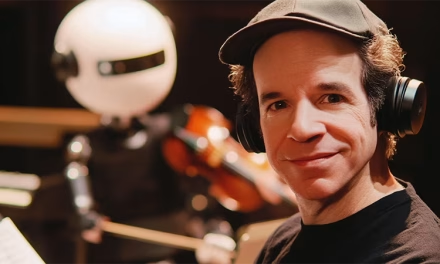Half-Life: Ray Traced is a new mod for the Valve first-person shooter, which adds hardware generated path-traced lighting to the entire game. When it’s ready, you’ll be able to download it for free.
The teaser trailer (below) does a good job of showing how dramatic these updates can be, with before-and-after transforming the game’s memorable opening into a more dark and mysterious start, while bringing out new details and highlights throughout.
It’ll also offer “global illumination, reflections, refractions, soft shadows and other visual effects with interactive framerates,” according to the video description. (Ray tracing is a technique for modeling light effects that are more realistic, and cpu intensive.)
The developer, sultim_t, previously worked on a similar mod for Serious Sam and is building upon some existing work that was done for ray tracing support for Half-Life. The mod won’t be ready soon, however, with sultim_t writing, “these things, they take time,” on YouTube. There’s reportedly a team of 10 fans helping, with delivery sometime this year (2022).


The mod will be made available for free(!) on sultim_t’s GitHub repository, where other similar projects have been hosted. If you’re itching to dive into Half-Life again, Black Mesa is a popular remaster of the original shooter, while Half-Life: Alyx is the most recent entry in the series, making use of VR for the first time in the history of the franchise.
This mod follows in the footsteps of other modders. Mods and ports of Half-Life eventually became complete stand-alone games like Counter-Strike and Team Fortress, making it one of the most influential games of all time.
By the way, don’t worry, nobody’s pirating the game here: because it’s a mod, you’ll need a copy of the original Half-Life to play it.
It turns out that this Half-Life mod is a reengineered version of a separate mod, which also provided ray-tracing for the original game back in 2019. That is still being developed too, available here.
Ray-Tracing a Classic
Lighting in computer games happens in a variety of different ways. One way is to just bake the lighting into the models, so that they “glow” in a way that makes them look somewhat natural to the eye. This is called “vertex” lighting, and the earliest computer games all used this method.
Another is to place virtual light sources around the scene, and then looking through the camera through each pixel on the screen, the rendering system works out whether the line of sight strikes a surface, and if so, where the light is coming from for that point, and then color the pixel.
The third way is ray tracing, and it works the illumination problem backwards: it traces rays from every direction from every light source to see what they would hit, adding light to each surface, coloring the light beam based on the color of the surface it just hit, and then bouncing the beam to see what else it can hit, adding color from its previous collision as it goes. By chance, some of these rays find the camera.
This is, mathematically, the way light works in real life, so you can imagine, ray tracing provides gorgeous results. It also takes an enormous amount of computing power to execute. Ray tracing is why computer graphics and computer animated movies look so wonderful, but it’s a very time consuming process.
The new generation of graphics cards, however, can do ray tracing in hardware. Where the CPU’s in our computers generally have no more than 8 cores, cards from companies like NVidia and AMD feature thousands of special graphics processing cores on-board to get the job done. It is the availability of this relatively new technology that is making projects like Half-Life: Ray Traced possible.
There’s something about the crisp, modern lighting combined with the vintage lo-res textures that is kind of glorious.
It’s just a matter of time before raytracing finally comes to consoles. What’s keeping it at arm’s length at the moment is that it takes up to two years to do one complete interation of console gaming technology. In the meantime, we have Half-Life: Ray Traced to look forward to.
-30-
![]()
David Raiklen wrote, directed and scored his first film at age 9. He began studying keyboard and composing at age 5. He attended, then taught at UCLA, USC and CalArts. Among his teachers are John Williams and Mel Powel.
He has worked for Fox, Disney and Sprint. David has received numerous awards for his work, including the 2004 American Music Center Award. Dr. Raiklen has composed music and sound design for theater (Death and the Maiden), dance (Russian Ballet), television (Sing Me a Story), cell phone (Spacey Movie), museums (Museum of Tolerance), concert (Violin Sonata ), and film (Appalachian Trail).
His compositions have been performed at the Hollywood Bowl and the first Disney Hall. David Raiken is also host of a successful radio program, Classical Fan Club.













You must be logged in to post a comment.